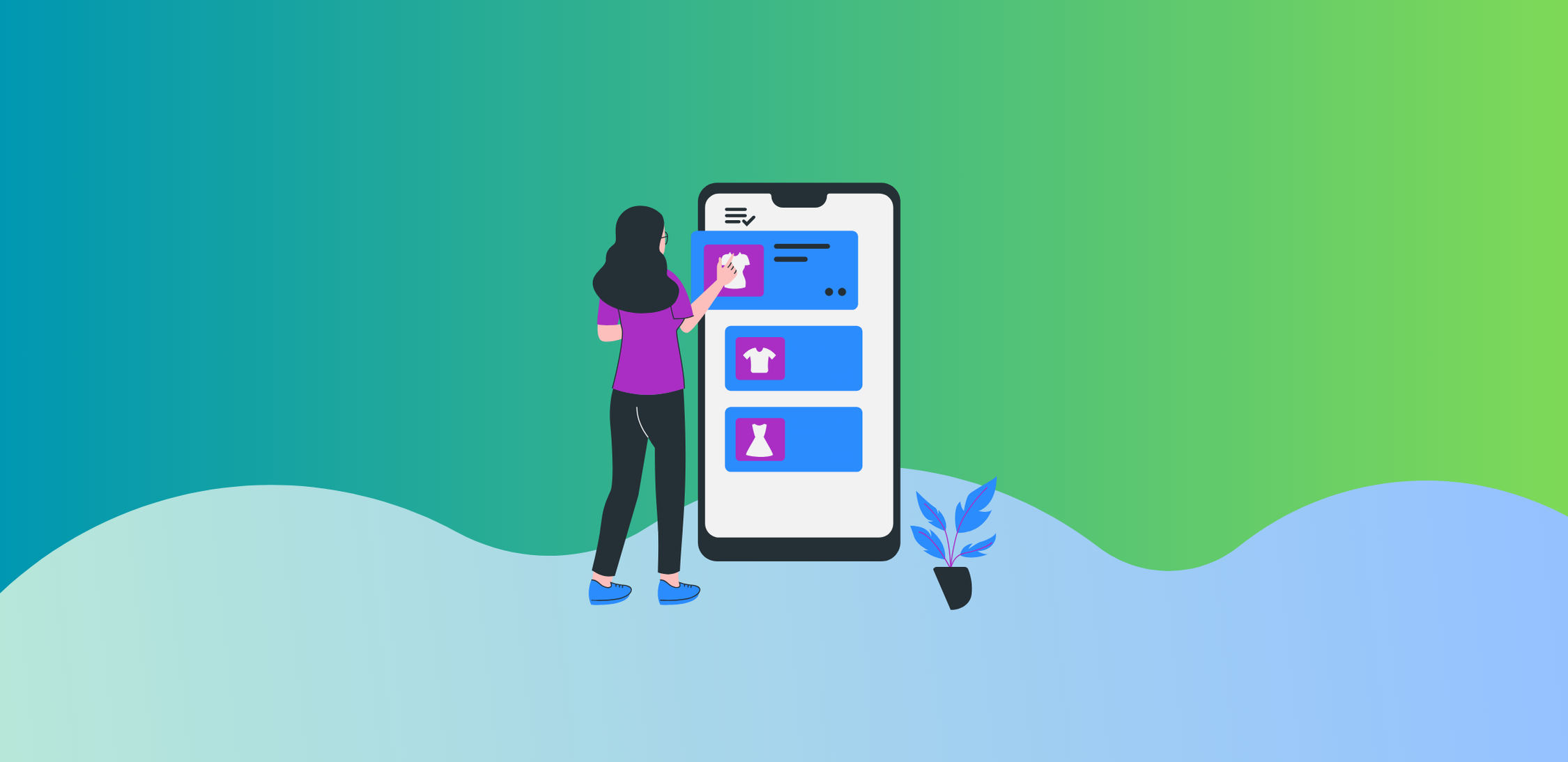How To Increase Personalized Customer Experiences In Loyalty Programs
In an era where customer relationships are the gold standard for brand success, personalization isn't just a trend; it's an evolution of customer...
Platforms
Services
Promotions
.
Featured Guide
Industries
Resources
Explore

In today's hyper-competitive marketplace, SMS loyalty programs have emerged as a game-changing strategy for building lasting customer relationships. With SMS campaigns achieving a 98% open rate compared to email's 26.8%, text messaging offers unparalleled reach for customer engagement.
The opportunity is significant: 59% of consumers are more likely to engage with brands when subscribed to SMS, while loyalty program members spend 2.5 times more than non-members. By combining SMS immediacy with reward-driven psychology, marketers can create powerful retention engines that drive both immediate sales and long-term customer value.
SMS and loyalty marketing convergence represents one of the most significant shifts in customer engagement strategy. The relationship is cyclical: while 39% of consumers sign up for SMS because they love a brand, SMS communications deepen brand affinity over time.
Key consumer behavior insights driving this shift:
SMS loyalty programs deliver measurable business impact:
These metrics demonstrate SMS's superior conversion rates and retention benefits throughout the customer journey.
Creating an effective SMS loyalty program requires a strategic structure and seamless user experience:
Value Proposition: Communicate immediate benefits clearly when customers sign up. Position SMS as a premium, exclusive channel among available communication options.
Enrollment Process: Ensure frictionless sign-up while maintaining SMS compliance. Use email and social media to promote your SMS loyalty program, creating multi-channel list-building opportunities.
Program Structure: Implement progressive reward levels that offer exclusive benefits exclusively available to SMS subscribers. This exclusivity drives initial sign-ups and sustains long-term engagement.
Your technical foundation significantly impacts program success:
Platform Selection: Choose solutions with robust segmentation capabilities and seamless integration with existing CRM and loyalty management systems. PassKit, for example, enables significantly boosted engagement through personalized messaging based on customer preferences and behavior.
Automation Capabilities: Essential for scaling effectively. Send instant messages and reminders based on customer behavior triggers, purchase history, and engagement patterns while reducing manual management overhead.
Data Integration: Your SMS platform should sync seamlessly with customer purchase data, loyalty point balances, and preference information. This integration enables the personalization strategies that drive superior engagement and satisfaction.
Personalization is critical for SMS marketing success, given the intimate nature of text communication. Effective segmentation begins with:
Purchase History Analysis: Customers who frequently buy specific categories should receive relevant SMS offers. Purchase frequency patterns inform messaging cadence—high-frequency customers appreciate weekly updates, while occasional buyers respond better to monthly communications.
Engagement History: Customers who consistently open and act on SMS messages represent your most engaged segment and can handle more frequent communications. Those showing declining engagement benefit from re-engagement campaigns with special incentives.
Effective personalization starts with addressing customers by name and referencing loyalty status. This basic approach creates immediate recognition and relevance that increases engagement.
Advanced personalization incorporates real-time data:
These informational messages provide valuable customer service while maintaining program awareness and driving actionable engagement.
The initial SMS experience establishes the tone for your entire customer relationship. Design welcome series that introduce program benefits while setting communication expectations:
Each message should include clear calls-to-action encouraging immediate engagement, such as completing profile information or making first purchases with welcome discounts.
Automated triggers create timely, relevant communications that feel personal and valuable:
Purchase-Based Triggers: Thank customers for recent purchases, suggest complementary products, or provide shipping updates that enhance post-purchase experiences.
Milestone Celebrations: Birthday rewards, anniversary dates, achievement milestones, and tier advancements create natural opportunities for celebratory messages that strengthen emotional connections.
Behavioral Triggers: Customers who haven't engaged recently receive win-back offers, while highly active customers get VIP treatment invitations or early product access.
SMS excels at delivering time-sensitive offers due to its immediate attention and high open rates. Unlike emails read hours later, SMS messages are typically read within minutes, making them ideal for:
Implement progressive urgency by starting with 24-48 hour redemption windows, then increasing urgency with shorter timeframes or enhanced incentives for non-respondents.
Loyalty tiers create natural opportunities for exclusive SMS communications:
Combine tier-based exclusivity with product launches or trending items to create compelling reasons for immediate action while reinforcing premium loyalty benefits.
Ongoing interaction builds strong customer relationships and keeps brands top-of-mind. Interactive SMS elements include:
Response-based workflows create dynamic conversation flows where customers receive follow-up offers based on survey answers or enter automated sequences during competitions.
MMS messages increase engagement by 15% over SMS by enabling richer content that showcases products, demonstrates usage, or creates visually appealing reward communications.
Strategic MMS deployment works best for high-impact communications:
Successful SMS loyalty programs require comprehensive measurement tracking both engagement metrics and business outcomes:
Engagement Metrics: Open rates, click-through rates, redemption rates, and response rates provide immediate feedback on campaign effectiveness.
Business Outcomes: Customer lifetime value, incremental revenue, purchase frequency, and retention rates demonstrate true business impact.
Segmentation Analysis: Track which customer groups respond best to different message types and frequencies to inform optimization strategies.
A/B Testing: Continuously test subject lines, send times, offer structures, and call-to-action phrasing. Even small response rate improvements significantly impact overall ROI.
Feedback Collection: Use short, mobile-optimized SMS surveys focusing on specific SMS experience aspects rather than general program feedback.
Regular Audits: Assess message frequency, content variety, and subscriber growth patterns. Watch for message fatigue signs like declining engagement or increased unsubscribe rates.
SMS marketing operates under strict regulatory frameworks requiring careful compliance attention:
US Requirements: The Telephone Consumer Protection Act (TCPA) requires explicit consent for SMS marketing messages.
European Requirements: GDPR mandates clear opt-in procedures and specific data handling protocols.
Consent Management: Maintain clear records of opt-in methods and timing, provide easy opt-out mechanisms in every message, and respect customer communication preferences throughout their relationship with your brand.
Message Frequency: Most successful programs send 2-4 messages monthly, though this varies by customer preferences and program structure. Monitor engagement metrics to identify optimal frequencies for different segments.
Content Quality: Every message should provide clear value. Combine promotional elements with useful information, exclusive access, or personalized recommendations rather than purely promotional content.
Timing Optimization: While general guidelines suggest avoiding very early morning or late evening messages, individual customer behavior patterns should inform personalized send time optimization.
SMS loyalty program evolution continues accelerating as new technologies reshape the marketing landscape. Artificial intelligence and machine learning enable more sophisticated personalization and predictive messaging that anticipates customer needs.
Integration with emerging technologies like augmented reality and voice assistants will create new interactive loyalty experiences delivered through SMS channels. Forward-thinking marketers should explore these technologies while maintaining focus on current best practices driving immediate results.
Success requires balancing immediate tactical execution with strategic long-term vision. The brands that thrive will consistently deliver value through every SMS interaction while continuously innovating to exceed evolving customer expectations.
Q: What's the optimal frequency for SMS loyalty program messages? A: Most successful programs send 2-4 messages monthly, but optimal frequency varies by customer segment and engagement patterns. Monitor open rates and unsubscribe rates to find the right balance. High-value customers may tolerate more frequent messaging, while new subscribers should receive fewer messages initially.
Q: How do I measure ROI for SMS loyalty program campaigns? A: Track both engagement metrics (open rates, click-through rates, redemption rates) and business outcomes (incremental revenue, customer lifetime value, retention rates). Compare SMS subscriber performance to non-subscribers across purchase frequency, average order value, and program engagement.
Q: What types of offers work best for SMS loyalty programs? A: Time-sensitive offers with clear value propositions perform exceptionally well, particularly exclusive discounts, early access to sales, and birthday rewards. Tier-based exclusive offers create aspiration for program advancement, while personalized recommendations based on purchase history drive higher conversion rates.
Q: How can I reduce SMS unsubscribe rates in my loyalty program? A: Focus on value delivery in every message, maintain consistent but not overwhelming messaging frequency, and use behavioral segmentation for relevant content. Provide preference centers where customers can adjust message types and frequency rather than opting out completely.
Q: What compliance requirements should I consider for SMS loyalty programs? A: Ensure explicit opt-in consent for all subscribers, include clear opt-out instructions in every message, and maintain detailed consent records. Comply with TCPA regulations in the US and GDPR requirements in Europe. Regular compliance audits help ensure ongoing adherence to evolving regulations.

In an era where customer relationships are the gold standard for brand success, personalization isn't just a trend; it's an evolution of customer...

The key to any loyalty program’s success is its customers. And customers love loyalty programs – one study revealed the average American consumer...

When a loyalty program is solely focused on rewarding transactional behaviors they are missing out on the chance to build real long-lasting customer...